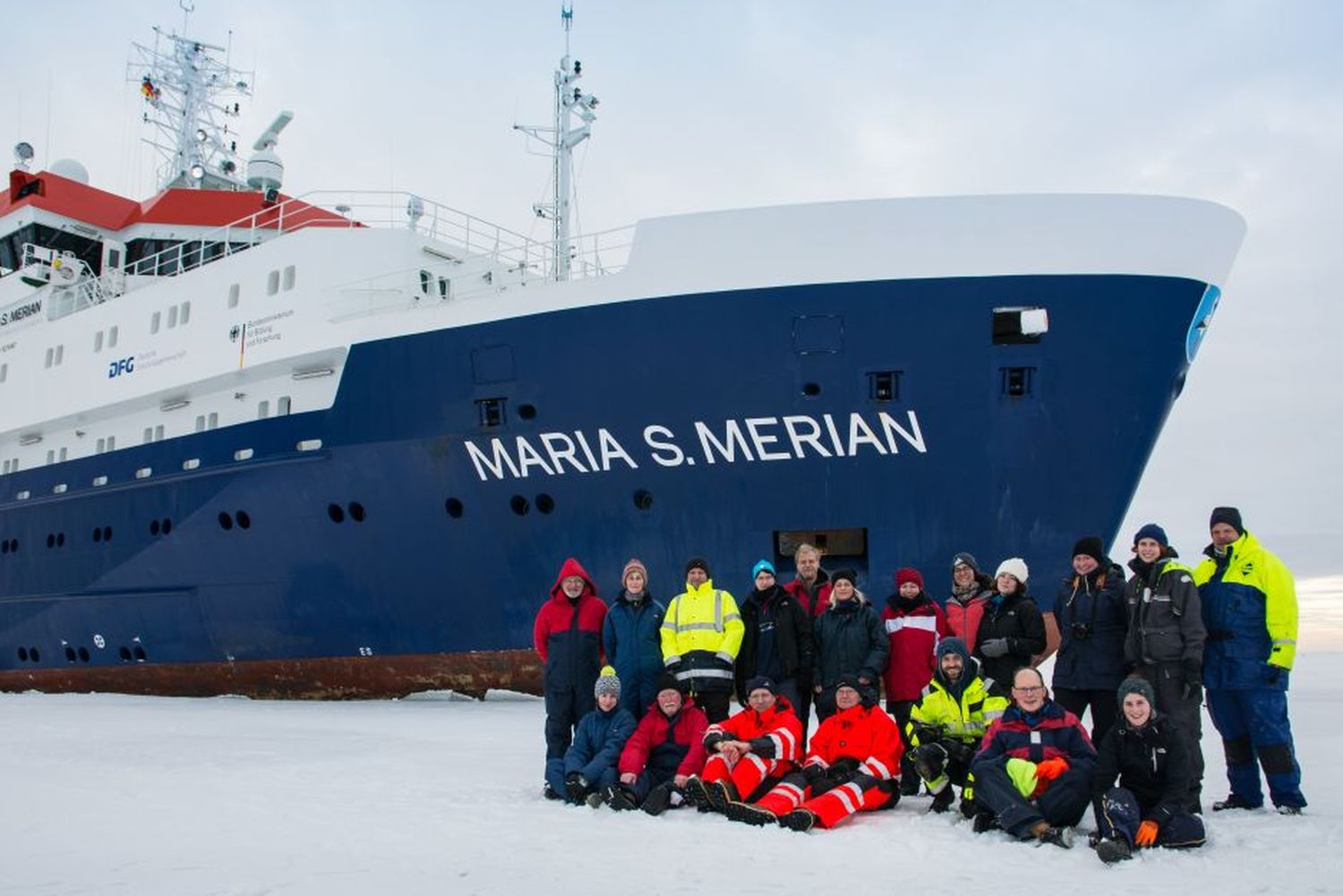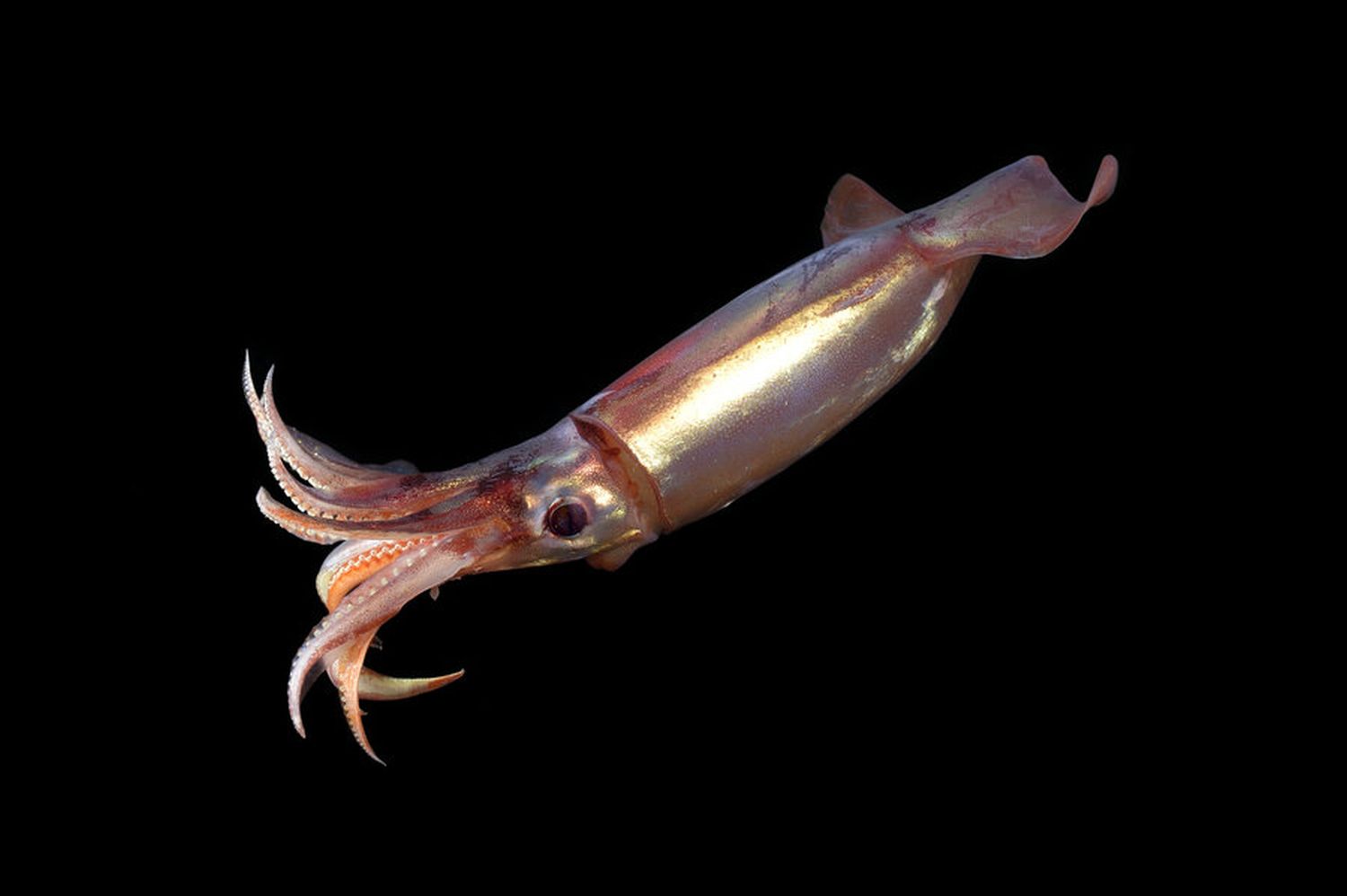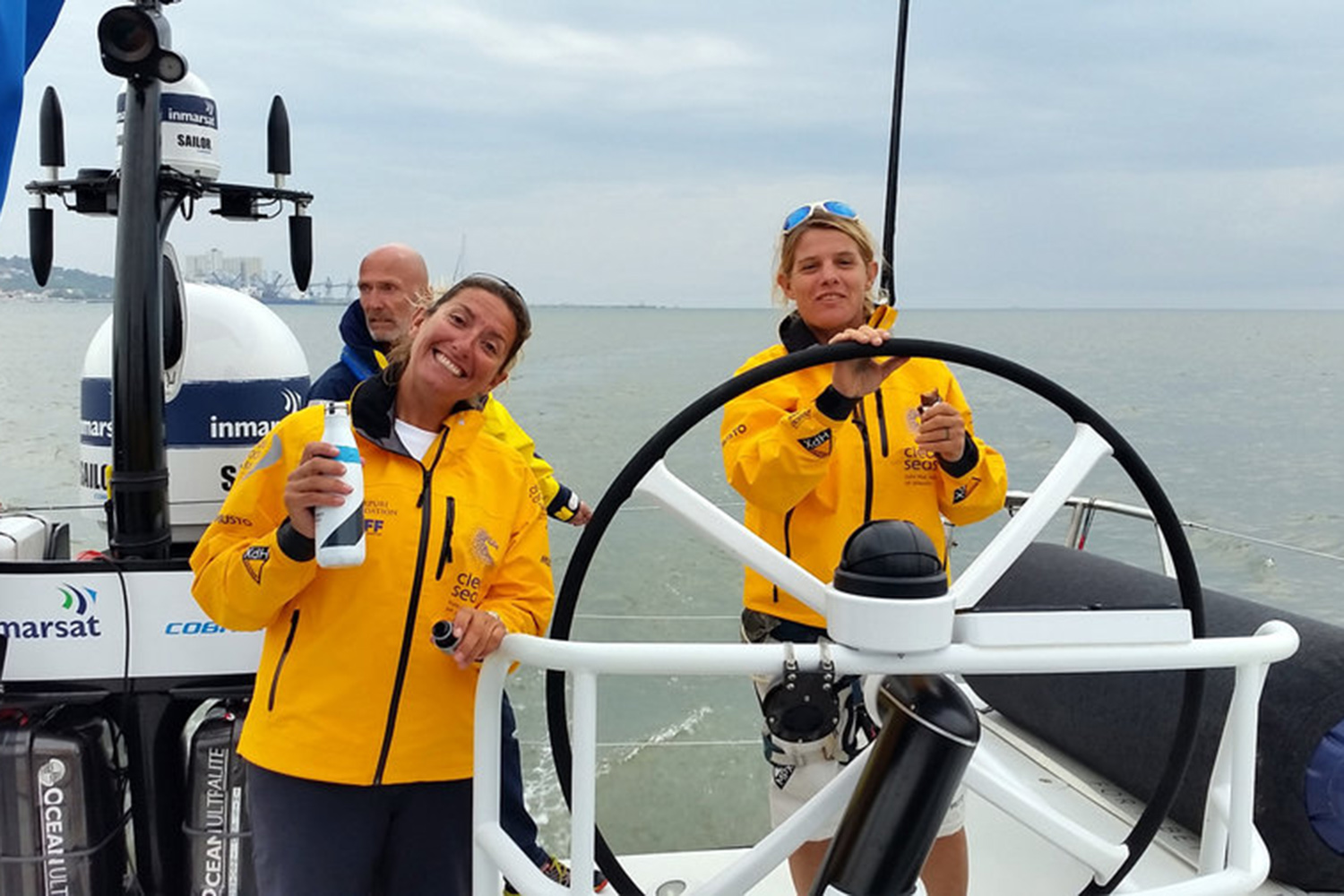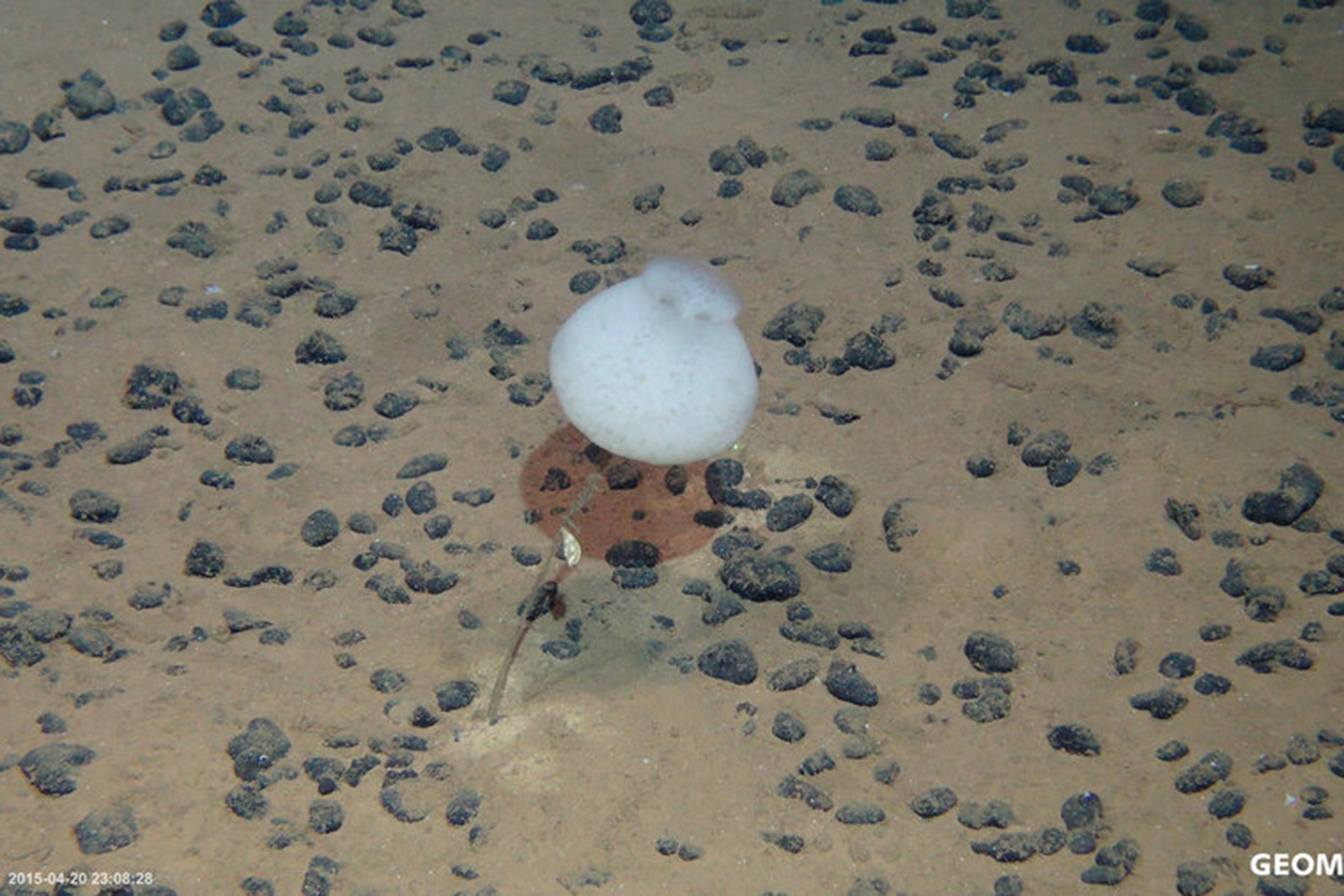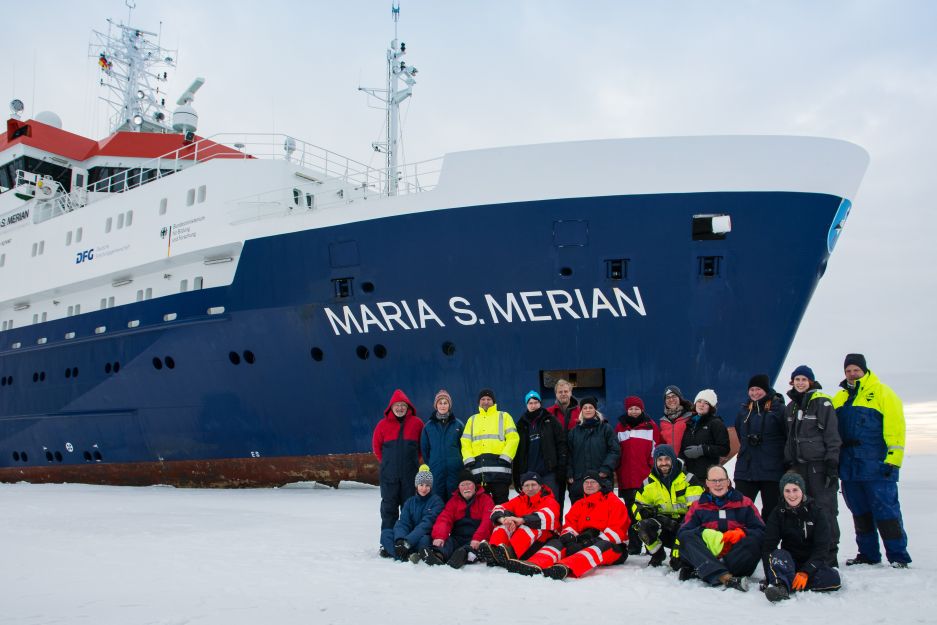Apart from comprehensive hydro acoustical measurements of the sea floor, researchers have extracted in total more than 40 sediment cores from Western and Central Balitc Sea and nine ice cores from the marine ice in the northern Baltic Sea basin, the Bothnian Bay between Finland and Sweden. In addition, comprehensive samples of the water column at nearly all stations were taken. The expedition MSM/62 came to an end in Kiel on March 27th.
From the data of the sediments and water column samples collected during the expedition, the international team of researchers hopes to gain insights about the changes in the Baltic Sea during the last glacial period, about the development of the Baltic Sea caused by anthropogenic climate change and the changes in sea level. Further aims of the expedition are more precise findings about the mixing of the water column with oxygen, both at the ice margin in the northern Baltic Sea basin through the marine winter ice as well as in the western and central areas. Here, strong west winds aerate the Baltic Sea, in particular in the winter months and enable the intake of water containing salt and oxygen.
At first, the route of the Maria S. Merian continued north into the nearly closed ice sheet in the Bothnian Bay between Finland and Sweden. In this area, the otherwise oxygen-deficient Baltic Sea is well-aerated and rich in oxygen. It is only the second time since its launch in the year 2005 that Maria S. Merian brought researchers to the wintry Baltic ice. "It was a special experience for all of us on board. We were able to make full use of the capabilities of the Maria S. Merian, which is well-equipped for ice thicknesses of up to 60 cm, and we were able to complete our planned research program," says expedition leader Prof. Dr. Ralph Schneider from the Institute of Geosciences at Kiel University.
In the ice, the team of researchers conducts numerous measurements and drillings. Oceanographers and geologists of the Leibniz Institute for Baltic Sea Research (IOW) in Rostock/Warnemünde extracted nine to 40 cm long ice cores on the still solid ice sheet and conducted measurements in up to 100 meter water depth with the help of the drill holes. "We assume that the formation of ice during the winter has a significant impact on the aeration of the deep water," says Dr. Thomas Neumann, oceanographer at the IOW. The findings from the data should help to better understand the process of the wintry aeration in the northern Baltic Sea in the course of the follow-up.
After a short stop in Kiel and a partial exchange of the participants in the expedition, the expedition continued in the direction of the western Baltic Sea. In cooperation with colleagues from the Geological Survey of Denmark and Greenland in Copenhagen and Aarhus (GEUS), the focus was on comprehensive measurements of the sea floor as a requirement for later sampling of the sediments between the Great Belt and the Kattegat. In particular Kiel's Vibrocorer, a research instrument with the ability to penetrate six meters into the sandy sea floor and pull sediment cores, was deployed. In the case of the western Baltic Sea, the sediment cores deposited since the last glacial period have become accessible with one drill core and enable new insights into the history of the Baltic Sea. The glaciers from the glacial period slowly withdrew from the western part of the Baltic Sea 12,000 years ago. Since then, the inland sea has undergone many different development stages until its present formed. "Some areas have developed from large lakes with a number of island groups over brackish water to the open sea. We are interested in the influence of global sea-level rise and the raising of the land mass after the melting of the glaciers. These factors have significantly shaped the development of the northern Baltic Sea," says Niels Nörgaard-Pedersen from the geological service in Aarhus (Denmark). The first look at the sediment cores which were extracted during the current journey have already shown clear transitions from former ice margin lakes to coastal zones and full marine conditions. With the help of closer cooperation between Kiel University and the geological service in Aarhus, in the future the climate history of the Baltic Sea will be studied beyond state borders.
Today, Monday (March 27th), Maria S. Merian will leave Kiel for Emden for a routine check in the shipyard. After that the research expedition will be continued in the North Atlantic.
Links
www.maria-s-merian.de
www.kms.uni-kiel.de
www.geus.dk
www.io-warnemuende.de
Contact
Friederike Balzereit, Public Relations, Cluster of Excellence "The Future Ocean", Telephone: 0431-880-3032
fbalzereit@uv.uni-kiel.de
Professor Ralph Schneider, Institute of Geosciences, Kiel University
schneider@gpi.uni-kiel.de
…
Press material
Erst zum zweiten Mal seit mehr als zehn Jahren brachte die Maria S. Merian Forschende an den Eisrand der nördlichen Ostsee in der bottnischen See.
Photo: Sören Janssen, Briese Research
The virbocorer extracts up to six meter long sediment cores from the sandy sea floor. The cores provide insight into the more than 12,000 years of history of the Baltic Sea
Photo: Friederike Balzereit, The Future Ocean
